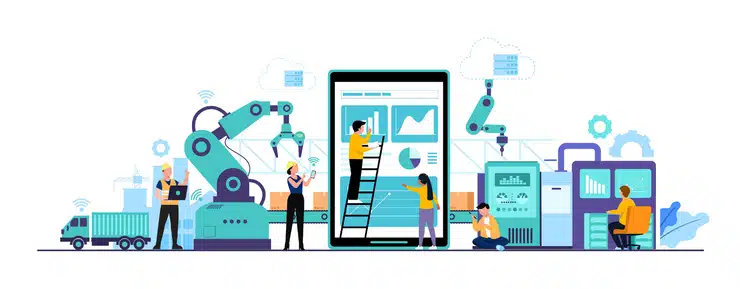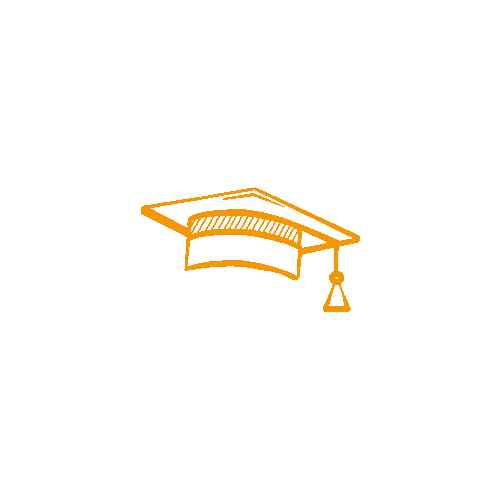An Overview of Deep Learning For Computer Vision

Introduction
Deep Learning techniques have recently been demonstrated to perform better than state-of-the-art Machine Learning methods in several domains, with computer vision being one of the most notable examples.
Convolutional Neural Networks, Deep Boltzmann Machines, Deep Belief Networks, and Stacked Denoising Autoencoders are some of the most prominent algorithms of Deep Learning in computer vision.
A description of how they are applied to various computer vision tasks, including object identification, face recognition, action and activity recognition, and human position estimation, is provided. The obstacles involved in constructing Deep Learning techniques for computer vision applications are briefly summarized in this article.
What Is Deep Learning in Computer Vision?
Computer vision is a branch of Machine Learning that focuses on analyzing and comprehending pictures and videos. It is used to educate computers on how to “see” and use visual data to do tasks humans can do with visuals.
In order to translate visual data, computer vision models need features and contextual data discovered during training. Models can understand photos and videos to perform prediction or decision-making tasks.
Even though they deal with visual data, image processing, and computer vision are different. Image processing entails altering or editing photos to create a fresh outcome. It could involve boosting resolution, enhancing brightness or contrast, obscuring delicate information, or cropping. Image processing and computer vision are different in a way that the former does not always need to identify content.
How Is Deep Learning Applied to Computer Vision Tasks?
Computer vision requires a tremendous amount of data, and Deep Learning can be of help in such scenarios. Data analyses are repeated until the system is able to distinguish between items and recognize images. The two main methods used to accomplish this are Deep Learning, a particular type of Machine Learning, and convolutional neural networks, a significant variety of neural networks.
An automated Machine Learning system may learn how to interpret visual input with the use of pre-programmed computational frameworks. The model can learn to distinguish between similar images if given a sizable enough dataset. The system can learn on its own thanks to algorithms, which enable it to take the position of humans in activities like picture recognition.
Deep Learning in computer vision plays an essential part. Convolutional neural networks help Deep Learning and Machine Learning models understand by breaking up images into smaller, taggable portions. It executes convolutions with the aid of the tags and then uses the tertiary function to gain insight into the scene it is watching. The neural network conducts convolutions during each cycle and assesses the accuracy of its recommendations. And at that point, it begins to perceive and recognize images similarly to a human.
In the actual world, putting together a jigsaw puzzle is akin to computer vision. Deep Learning in computer vision can help all of these jigsaw puzzle pieces together to create an actual image. The neural networks of a computer vision system operate exactly like that. Computers can put all the components of the image together through a sequence of filters and operations and then think independently. But instead of just being given a puzzle image, the computer is frequently provided with thousands of images that teach it to detect specific items.
For instance, software developers upload and feed the computer millions of photographs of cats rather than teaching it to look for cats’ characteristic features, such as sharp ears, long tails, paws, and whiskers. This enables the computer to comprehend a cat’s various characteristics and recognize them immediately.
Some Key Computer Vision Challenges
The following are the computer vision challenges:
Inadequate Hardware
Implementing Deep Learning in computer vision technology involves using both software and hardware. A company must set up high-resolution cameras, sensors, and bots to guarantee the system’s efficacy. This expensive technology may not be fitted properly, resulting in blind spots and weak CV systems.
Some CV systems also need IoT-enabled sensors; one study, for instance, shows how to use IoT-enabled flood monitoring sensors.
For a successful installation of CV hardware, the following elements should be taken into account:
- The cameras offer the necessary frames per second (FPS) rate and are high definition.
- Cameras and sensors cover all surveillance locations.
- All of the things of interest are covered by the positioning. For instance, in a shop setting, the camera should capture all of the items displayed on the shelves.
- Blind spots are avoided by correctly configuring each device.
The shelf-scanning robots from Walmart are a prime example of unsuitable hardware for CV. Walmart terminated its relationship with the supplier and recalled its shelf-scanning robots. The company discovered that customers might find the bots odd due to their size and found other, more effective ways, even though the CV system in the bots was functioning perfectly.
Conditions of Illumination
Lighting greatly influences the definition of objects. The lighting will have an impact on how the same objects is seen or percieved.
Poor Quality
Datasets that have been labeled and annotated are the basis for effective training and application of CV models. It is not difficult to find general-purpose public datasets for computer vision. However, businesses in particular sectors (such as healthcare) frequently need help to secure high-quality photographs due to privacy concerns (for example, CT scans or X-ray images). Other times, it can be difficult to locate significant amounts of real-world video and photographs (such as footage from auto accidents and crashes).
Another frequent barrier is the need for an established data management strategy within a company, making it challenging to get confidential information from compartmentalized systems to improve the public datasets and gather additional information for retraining.
Choosing a Model Architecture Insufficiently
Often, most businesses need more training data and/or MLOps maturity to consistently develop cutting-edge computer vision models that perform in line with industry benchmarks. In contrast, when it comes to gathering project requirements, line-of-business leaders frequently establish too ambitious goals for the data science teams without considering the likelihood of achieving such goals.
Advanced Deep Learning Methods in Computer Vision
More precise and complicated computer vision models have been made possible by advanced Deep Learning technologies. The incorporation of computer vision applications is becoming increasingly beneficial as these technologies advance. Here are some examples of how Deep Learning is being applied to enhance computer vision. The following are some of the advanced Deep Learning methods in computer vision:
Object Recognition and Localization
Finding the locations of items in an image is done via image localization. After being recognized, items are marked with boundary boxes. Object detection builds on this by classifying the identified items. This method is based on CNN’s like Fast RCNN, Faster RCNN, and AlexNet.
Object detection and localization techniques can recognize multiple objects in complicated scenes. This can then be used for functions like reading medical imaging for diagnosis.
Semantic Division
In contrast to object detection, semantic segmentation, also referred to as object segmentation, is based on the precise pixels associated with an object. This eliminates the need for boundary boxes and allows for more precise definitions of image objects. Fully convolutional networks (FCN) or U-Nets are frequently used for semantic segmentation.
Semantic segmentation is frequently used to train autonomous vehicles. This approach allows researchers to use photographs of streets or thoroughfares with clearly defined object boundaries.
Pose Evaluation
Pose estimation is a technique used to identify the locations of joints in a photograph of a person or object and what those locations signify. It is applicable to both 2D and 3D images. PoseNet, a CNN-based architecture, is the main method used for pose estimation.
Pose estimation can be used to create realistic postures or motions for human beings by predicting where different body components will appear in a photograph. This functionality is frequently utilized for gait analysis, augmented reality, and replicating robotic movements.
Motion Monitoring
A crucial component of any surveillance system is motion detection. This might be used to start an alarm, notify someone, or just log the occurrence for study later.
Using a motion detector, which recognizes changes between frames of an image stream, is one technique to identify motion. Thresholding is the most basic method of motion detection. This technique assigns each pixel in the frame a predetermined value (threshold). It assesses whether the pixel has altered sufficiently from its initial value to be regarded as having altered significantly.
Edge detection methods can also be used for motion detection. Tools for edge detection scan an image for edges and then check for pixels that have been designated as being distinct from the surrounding pixels.
Face Identification
Similar fundamental ideas apply to both object identification and face recognition. The key distinction is that attention is now given to the specifics required to recognize a human face in a picture or video. A large database of faces is employed for that aim. The algorithm examines the face’s contour, the space between the eyes, and the size and shape of the ears and cheekbones, among other details.
Recognizing the same persona in various lighting situations, under different perspectives, or while wearing a mask or glasses is the most challenging component of the process. Convolutional neural networks are now being trained to make predictions using a low-dimensional representation of 3D faces. This method could lead to more accuracy than the usage of 2D images and faster operation than straightforward 3D recognition.
Conclusion
Deep Learning for computer vision is an incredibly promising research field that enables solving a broad range of real-world issues and simplifying several procedures in industries such as healthcare, sports, transportation, retail, manufacturing, etc. Computer vision Deep Learning offers a great deal of skill and advantage. Enroll in the Executive PG Diploma in Management and Artificial Intelligence course by UNext to learn more about Deep Learning in computer vision.






